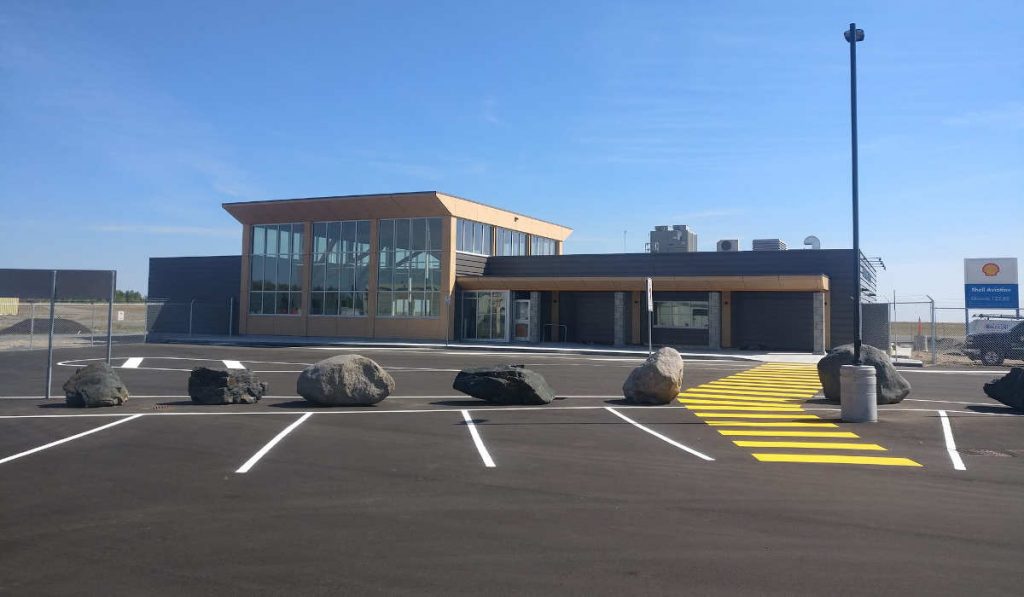
Features
Airports
Kenora Airport’s terminal wins architectural award
March 3, 2020 By Wings Staff
 The 10,915-square-foot Kenora Airport Terminal Building opened in fall 2018. (Photo: Kenora Airport Authority)
The 10,915-square-foot Kenora Airport Terminal Building opened in fall 2018. (Photo: Kenora Airport Authority) The Canadian Wood Council’s Ontario Wood WORKS! Program joined forces with the Ontario Forest Industries Association (OFIA) on February 26 in Toronto to recognize six winning projects as part of the Ontario Wood Design Awards program. Organized to showcase advancements in wood research and technology, as well as the application of wood in construction, one of the six winning projects was the Kenora Airport new terminal building, designed by Architecture49.
The 10,915-square-foot Kenora Terminal Building, which officially opened in fall 2018, won in the category of Low-rise Commercial. In describing the award-winning building, OFIA explains its structural frame includes a number of timber posts, glulam beam and Laminated Strand Lumber (LSL) wood joist first floor over a partial basement, and exterior glulam canopies with stone clad columns, both airside and groundside. The project planners sourced local wood for key structural elements, while its roof and floor joists were manufactured in Kenora.
“The winning projects reflect the sophistication of an evolving wood culture that is gaining momentum in Ontario,” said Marianne Berube, executive director for the Ontario Wood WORKS! Program. “We’re happy to partner with OFIA this year to recognize the design and construction teams that are pushing the boundaries of innovation for wood construction.”
The other six award winners included: Shopper’s Drug Mart Flagship, Toronto (Brook McIlroy Architecture); Deerhurst Lakeside Lodge, Huntsville (Richard Wengle Architect); Temagami First Nation Multi-Use Facility, Temagami (Larocque Elder Architects); King Township Municipal Administration Centre, King City (+VG Architects): and 80 Atlantic Ave., Toronto (Quadrangle Architects).
“The design and construction teams from the winning projects are revolutionizing the way we think about wood in construction,” said Jamie Lim, president and CEO of OFIA. “Growing pressure for the built environment to reduce greenhouse gas emissions has resulted in more sustainably conscious building material choices that align with our members’ commitment for sustainable development – meeting the needs of today without compromising the needs of future generations.”